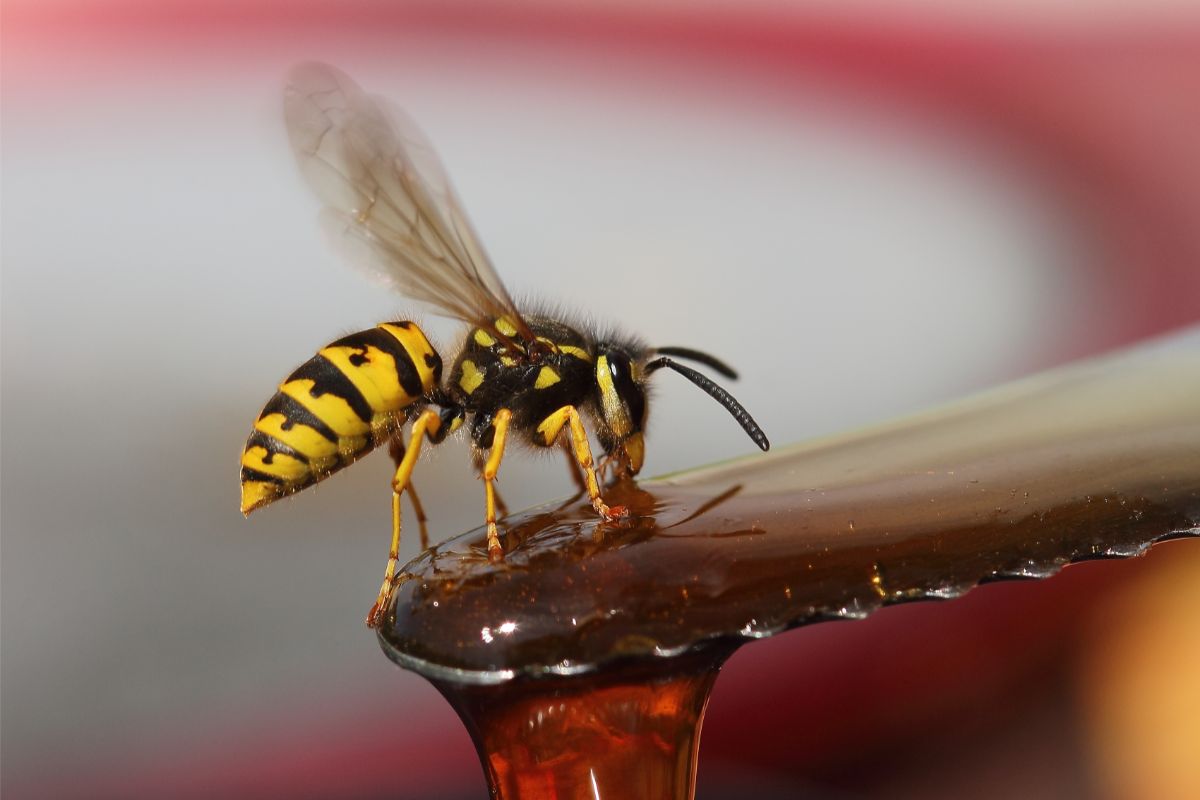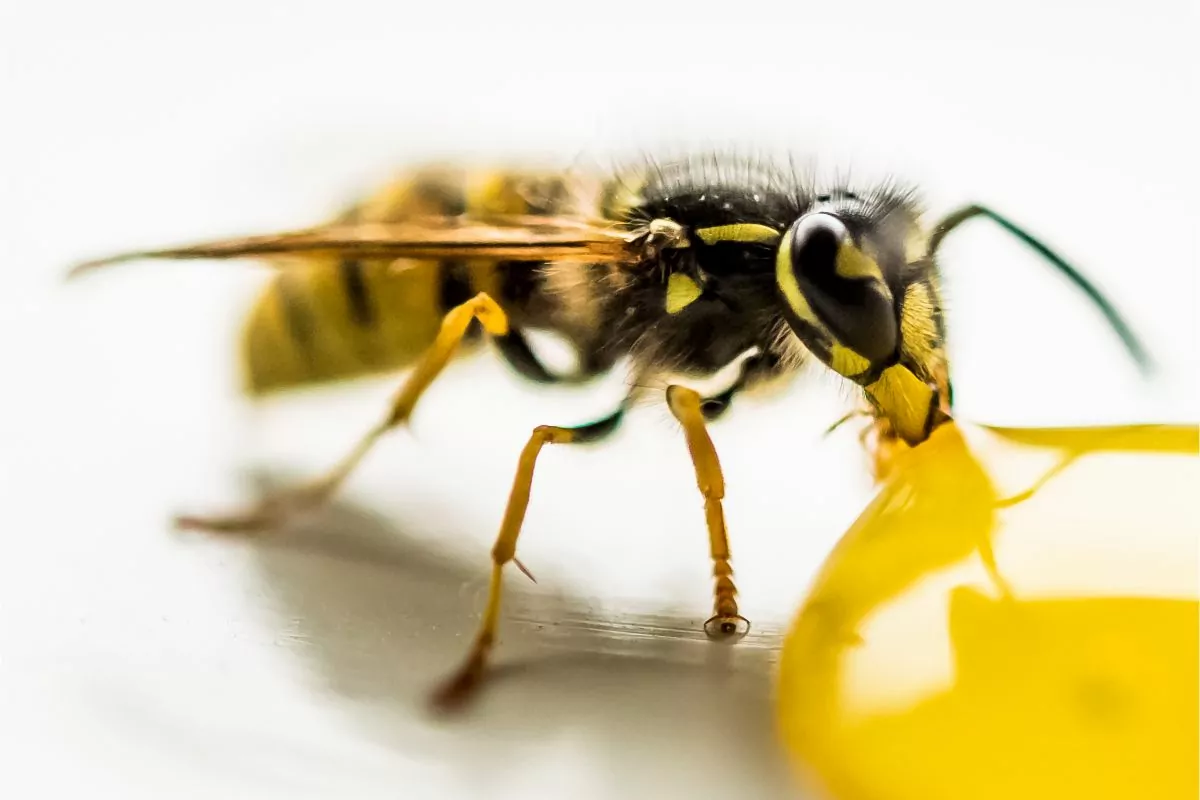The short answer is yes, yellow jackets are pollinators. Despite being a predatory wasp these insects are actually highly beneficial for the environment.

They are able to stay active in temperatures that most other insects are not able to tolerate. That being said, a freezing winter can kill these wasps off quickly.
In this article we are going to take a closer look at whether yellow jackets (see also: Do Yellow Jackets Leave A Stinger?)are pollinators as well as a variety of things that you need to know about these ferocious wasps.
There is quite a bit to go over, so let’s dive right in and get started.
The Good And The Bad About Yellow Jackets
Let’s start off with the good. Yellow jackets are terrifying insects with a nasty reputation for repeatedly stinging.
But they do have their uses. Yellow jackets catch and kill insects which damage crops and other plants and feed them to their hatchlings.
On top of that they also eat blow flies and blow fly larva which is highly beneficial to us. These insects are also pollinators and can help the environment by spreading pollen from flower to flower.
Now for the grizzly bit, these insects are at their peak in the late summer and early fall. Their population is at its highest then and it is at this time that feeding and habitats become a bit of an issue.
Because of this the yellow jackets around us will be eating many of the same foods and drinks that us humans enjoy.
This can mean that there will be more encounters with them.
As such there will be more contact with humans which can be deadly for those of us that are allergic to the venom carried by these infamous insects.
What Can Attract Yellow Jackets To Your Yard?
So why are these deadly wasps coming to your yard? There are a few reasons why this might be happening and that is what we are going to talk about in this section.
Certain Plants Attract Yellow Jackets
Yellow jackets may eat other insects as a whole, but they are also pollinators.
This means that they will go from flower to flower looking for nectar. If there are flowering plants in your garden which bloom during the summer or fall, this could be why you have yellow jackets in your garden.
If this is the case for you, we recommend that you plant flowers that bloom earlier in the year.
Additionally yellow jackets can be drawn to fruit trees. So if you have any in your yard it is essential that you get rid of any fruit that is ripe or over ripe. This includes fruit that is on the ground.
Your Yard Is Full Of The Yellow Jackets’ Favorite Food
This is not really something that you can control. But there can be other small insects in your garden that yellow jackets love eating and this can draw them to your yard.
Some of these insects can include aphids, spiders, flies, caterpillars, grasshoppers, and more.
Your Yard Is Ideal For Nesting
If your garden does not contain food that the yellow jackets like then they might be around because your garden is just perfect for their nests.
Yellow jackets do not always build their nests under eaves. There are some species which prefer to build their nests underground, in wood piles and in various plants.
As such this can make them all the more dangerous as you can easily upset their nest without meaning too. This can cause the swarm to attack.
How Do You Prevent Getting Stung?
If you have upset a yellow jacket or the whole nest, (see also: What Does A Yellow Jacket Nest Look Like)there is not much that you can do about it. You will be a target for them which they will not let get away with upsetting them.

Below are a few hints and tips which you can apply to reduce the risk of getting stung by these dangerous insects:
- Avoid Swatting Insects, if you notice one of these insects land on you, do not strike them. Either gently brush them off and walk away.
- Watch them fly. By observing yellow jackets you can see where they are flying to and from and thus determine where their nest is.
- Wearing floral perfumes and other products can attract insects like the yellow jacket. This just makes it more likely that you will get stung if you are not careful.
- Yellow jackets love fizzy drinks. So if you are drinking a beverage like this outside, make sure that it is poured in a glass so you can see if a yellow jacket has gone inside.
- Cover any pet food or garbage cans to reduce the risk of attracting insects that the yellow jacket loves to eat(see also: What Do Yellow Jackets Eat?).
- Make use of imitation nests to encourage yellow jackets to nest elsewhere. Bear in mind that this may not work for ground nesting yellow jackets.
By following these tips, you can reduce the likelihood that you will get stung. But the risk will not go away entirely. Just take care not to annoy these infamous insects and they will likely just leave you alone.
Final Thoughts
We hope that you have enjoyed reading this article and learning about yellow jackets. Despite their ferociously infamous nature, these little creatures are beneficial for the environment.
That being said, you really need to take care when these wasps are around. They can sting repeatedly and to top it off, the stings are very painful.
So, if you come across some of these insects, do not disturb them. You are less likely to be stung if you let these infamous insects go about their business.
If you have enjoyed reading this article, we recommend that you check out our website when you get the chance.
We have a wide range of articles there that you are bound to find interesting and insightful there to make your day.
- Do Bug Zappers Kill Bees? Completely Explained - April 9, 2024
- Does Brake Cleaner Kill Bees? Full Explanation - March 20, 2024
- Do Bald-Faced Hornets Kill Honey Bees? & How to Protect Them - March 4, 2024
